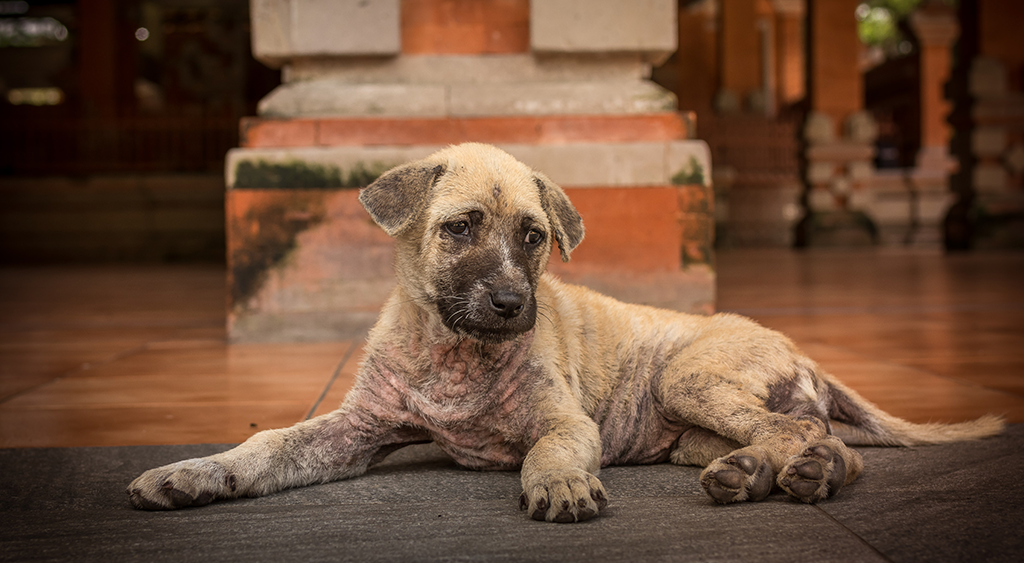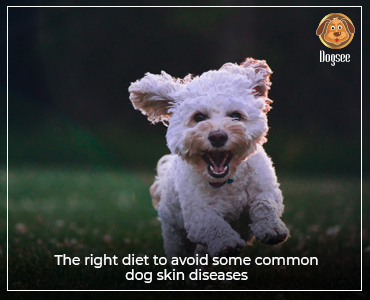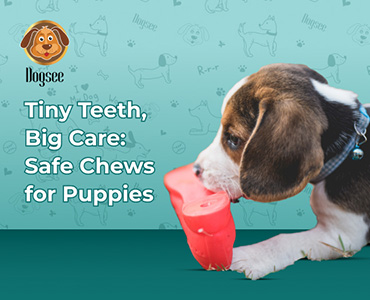
The sound of your dog's constant scratching or licking can be irritating for the two of you. But don’t blame your pet for these bad habits, as a skin condition might be the culprit.
Let's have a look at the 10 most common dog skin diseases.
Allergic Dermatitis
Allergic dermatitis refers to a skin condition caused by environmental and food allergens which leaves your dog with generalised itching, ear and skin infections.
Environmental allergies are hypersensitivity caused when substances in the air like pollen, grass, soil, house dust mites, or mould spores enter your pet’s body. Dogs will scratch, chew, lick, or rub areas of their bodies, such as their paws, faces, and rear ends.
A food allergy occurs when your pet’s immune system mistakes food for a threat and gets defensive, which develops a reaction. Dogsee chew has a wide variety of plant-based, vegan dog foods that have the potential to solve most food allergies.
Ringworm
Ringworm, unlike its name, is an infection caused by a fungus called dermatophytosis and not worms. Infection can come from direct contact with an infected symptomatic animal, direct contact with an asymptomatic carrier, or contact with spores in the environment. Freshly shaved, scraped, or scratched skin is most prone to dermatophyte attack as the fungus cannot infect healthy skin.
Yeast Infections
The skin of a dog is home to a plethora of bacteria and fungi. Under normal circumstances, these organisms do not cause a problem and are kept under control by the immune system.When Malassezia, a type of yeast that grows on dog skin, grows out of control, it irritates the skin and leads to inflammation. Yeast infections are not contagious. Severely infected dog ears can also cause deafness. It’s best to avoid yeast and heavy metal consumption and encourage the intake of organic food.
Ectoparasitic Attacks
Ectoparasites are organisms that feed and live on your pet’s body and cause dangerous health effects. Fleas are carriers of tapeworm infection and blood-borne diseases, which can be really serious. Mites are a common cause of itching and scratching in dogs and are microscopic in nature. Dog lice feed on skin debris, sebaceous secretions, feathers, or blood.
Lupus
Lupus is an autoimmune disease that happens when the body’s immune system attacks its own tissues and organs. The inflammation caused by lupus can affect many different areas in the body, including the skin, joints, kidneys, blood cells, the brain, heart, and lungs.
Seborrhea
Seborrhea in dogs is a condition that affects keratin in the skin. Symptoms commonly develop on the back or feet, as well as inside pouches and skin folds as the skin cells produce excessive keratinous material that causes dermatitis with flakes and scaling.
Pyoderma
Pyoderma is a superficial bacterial infection that affects hair follicles and the surrounding skin. Dog skin disease known as pyoderma will have red bumps, flaky skin, hair loss, and discoloration.
Alopecia
Alopecia, also known as hair loss, refers to thinning hair or hair loss spots. Itching and inflammation of the skin may also accompany alopecia. Ectoparasites, spider bites, and skin infections can cause alopecia.
Acral lick dermatitis: typically seen on the front part of the lower leg in dogs, these bruises develop as a result of chronic and compulsive licking. Over time, the skin in the affected area becomes red, raised, and thickened as constant licking prevents healing. Its treatment consists of preventing licking, managing any pain, and fixing the underlying cause if one is found. It’s also important to treat your pet with a vegan meal like Dogsee Chew.
Skin Tumors
There are several types of skin tumors, cysts, and bumps that can appear on the skin. These growths may be malignant or benign.Skin tags, different skin growths require different diagnoses. Be sure to see your vet if you notice any new skin growths on your dog.
If your dog is showing any symptoms of the above skin problems, visit your vet and get a proper diagnosis on how to treat the dog skin infection.
 HELPFUL0 people found it helpful
HELPFUL0 people found it helpful
Related Blogs
Subscribe to Our Blogs
and never miss on the latest update!



















